Afull-scalefield experiment to study thethermal-deformation process of widening highway embankmentsin permafrost regions
ShuangJie Wang ,Long Jin ,3,Kun Yuan ,DongGen Chen ,JinPing Li,Yi Song
1.State Key Laboratory of Road Engineering Safety and Health in High‐altitude Regions,CCCCFirst Highway Consultants Co.,LTD,Xi'an,Shaanxi710075,China
2.Institute of Earth Environment,Chinese Academy of Sciences,Xi'an,Shaanxi710061,China
3.College of Science and Engineering,University of Tasmania,Hobart 7005,Australia
ABSTRACT As one of the widely used upgrading way in road engineering,the widening embankment(WE)has suffered evident dif‐ferential deformation,which is even severer for highway in permafrost regions due to the temperature sensitivity of fro‐zen soil and the heat absorption effect of the asphalt pavement.Given this issue,a full‐scale experimental highway of WE was performed along the Qinghai‐Tibet Highway(QTH)to investigate the differential deformation features and its developing law.The continuous three years'monitoring data taken from the experimental site,including the ground tem‐perature and the layered deformation of WEand original embankment(OE),were used to analyze the thermal‐deforma‐tion process.The results indicate that the widening part presented the remarkable thermal disturbance to the existing em‐bankment(EE).The underlying permafrost was in a noteworthy degradation state,embodying the apparent decrease of the permafrost table and the increase of the ground temperature.Correspondingly,the heat disruption induced by widen‐ing led to a much higher deformation at the widening side compared to the original embankment,showing a periodic stepwise curve.Specifically,the deformation mainly occurred in the junction of the EE and the widening part,most of which was caused by the thawing consolidation near the original permafrost table.Ⅰn contrast,the deformation of EE mainly attributed to the compression of the active layer.Furthermore,it was the deformation origination differences that resulted in the differential deformation of WE developed gradually during the monitoring period,the maximum of which reached up to 64 mm.
Keywords:widening embankment;permafrost;deformation;in‐situ experiment
1 Introduction
The past decades have witnessed rapid transporta‐tion development in China.The Chinese highway op‐erating traffic mileage is ranked first in the world,ex‐ceeding 4,850,000 km by the end of 2018.However,traffic volumes on most of these highways have reached or exceeded their design capacities,which couldn't meet the economic and social development anymore.Given this situation,the highway upgrading and expansion is now an effective way to save land and reduce cost.As such,the embankment widening to increase the number of highway lanes has become a common measure to ease the volume of increased traffic in these highways(Shiet al.,2020).While for the widening embankment(WE),the interaction be‐tween the widening part and the existing embankment(EE)is the primary factor influencing the stability of WE.Hence,the differential deformation between WE and EE has become a significant challenge for widen‐ing engineering(Hanet al.,2007).
So far,various studies have carried out to analyze the deformation characteristics and mechanisms of the WE.Fanet al.(2012)investigated the impact of widening models on the embankment deformation of the expressway and found that the maximum settle‐ment within the edge of WE was 3.0 m to 5.0 m.Tanget al.(2007)found that both the horizontal and verti‐cal stresses concentrate in the junction of WE is the most unsubstantial part of the embankment.Then it is suggested that the step‐jointing method is a useful method for migrating the differential settlement of WE.Additionally,the influence of the differential de‐formation resulting from WE on the pavement behav‐ior was burrowed.Based on the monitoring data,Wenget al.(2014)analyzed the pavement structure strain features of WE under different settlements.Keet al.(2011)examined the stress and strain distribu‐tion of pavement under different splicing modes.To migrate and control the differential deformation of WE,geosynthetic‐reinforced and pile‐supported tech‐nologies are applied in the construction of WE(Zhaoet al.,2019).Moreover,some lightweight materials,including expanded polystyrene and lightweight soil,are also developed to use in WE(Thompsettet al.,1995;Kimet al.,2013).However,most of the previ‐ous achievements mainly focus on the non‐permafrost regions,and there is almost no reference for the differ‐ential deformation mechanism of WE in the cold ar‐eas.While for the permafrost,the deformation pro‐cess is not only influenced by the vehicle loads,struc‐tural parameters,but more by the thermal condition of the underlying permafrost.The permafrost is very sen‐sitive to the change of the temperature.When its ther‐mal condition is disturbed,the thaw occurs,and the embankment settlement forms.The variation of ice content,ground temperature,and soil characteristics would induce the difference of the thaw settlement,which will bring much more impact to the difference deformation of widening embankments.Furthermore,the highway in Qinghai‐Tibet Plateau exposes under the extremely low temperature and frequently freez‐ing‐thawing alternations,which would bring more ad‐verse influences on the widening embankments.Thus,the construction of widening embankments is facing a more complicated damage mechanism in cold re‐gions.So,the thermal stability of widening embank‐ments in permafrost should also be focused,which hardly has valuable experiences in the studies in non‐permafrost areas.
Ⅰn cold regions,permafrost is a particular type of soil composed of solid mineral particles,ice inclu‐sions,liquid water,and gaseous inclusions,which is highly sensitive to the variation in temperature(Laiet al.,2016).The strength wanes many times when the temperature rises to positive.The biggest engineering challenge encountered in these areas is the thawing of the permafrost.Furthermore,for highway construct‐ing in permafrost,like a heater on the ice,asphalt pavement would bring significant heat absorption and storage effect to the embankment(Zhanget al.,2018),which is about more than 8 times greater than that of the natural surface(Yuet al.,2007).Thus,the permafrost underlying the highway faces a remarkable thawing risk.Ⅰt is vital that the geolog‐ical hazards and engineering issues resulting from the thawing of permafrost be taken into consider‐ation(Jinet al.,2012;Wanget al.,2020).Addition‐ally,the extreme low‐temperature and the frequent freezing‐thawing alternation also have negative im‐pacts on the operation law of highway(Wanget al.,2018;Shenet al.,2020).To solve the thaw settlement in permafrost regions,several active cooling measures were proposed to improve the thermal stability of the highway embankments(Yuet al.,2005;Laiet al.,2006;Niuet al.,2006;Songet al.,2013;Wuet al.,2014;Peiet al.,2019).Moreover,considering the ac‐tual construction process,Peiet al.(2018)firstly pro‐posed the optimal construction interval of the multi‐layer asphalt pavement to reduce the thermal distur‐bance.However,as the lack of the field project of widening embankment in permafrost,the existing studies mainly focus on newly constructed highway and maintain of the operated road,few on the widen‐ing engineering in cold regions.For the widening project,the difference of the thermal state in the wid‐ening part and the existing embankment will be more significant as the difference in the construction time,forms,and materials,which has a sharp distinc‐tion from the current engineering.
With the transportation development in perma‐frost regions,the widening embankment will become an essential way during highway upgrading.Using the existing road to widen as a higher‐grade highway has already applied in permafrost in China,such as Gonghe‐Yushu Expressway.Featuring the complicat‐ed geology engineering characteristics of permafrost and few engineering experiences,the WE in perma‐frost is under a serious situation ever not met.The thermal condition,deformation process will show a distinctive rule compared to the existing project in cold regions,which relates to the development of thermal damages.Ⅰt is of great importance to investi‐gate the differential deformation process of WE,and two issues should be noticed.Firstly,since the EE has a relatively thermal mechanical stable state after several years'operation,the embankment widening will definitely generate additional impact on the orig‐inal permafrost foundation,not only the additional stress but also the additional thermal disturbance,which is a strong coupling within the embankment.Secondly,how to combine the EE with the widening part will significantly influence the success of the widening project.Thus,examining the differential deformation variation of WE plays a great role in the design and maintenance of widening engineering in permafrost regions.Therefore,in this paper,a full‐scale field experiment of widening highway was per‐formed,aiming to reveal the differential deformation process and provide a thermal‐deformation stability evaluation of WE from field‐testing engineering un‐der the real environment.Based on the continuous monitoring data over the past three years,the ground temperature features and the differential deformation process were analyzed.The research results could give technological support to the construction in per‐mafrost regions.
2 Experimental design
A western Chinese highway,named Qinghai‐Tibet Highway(QTH)in Qinghai‐Tibet Plateau of China,was selected as a field experiment site.This site lo‐cates at 35°18'56.90"N,93°18'37.90"E with an eleva‐tion of 4,540 m at the Chu Kumar River Plain,which is seated in the hinterland of continuous permafrost(Figure 1).Ⅰt lies in a flat topography.There is sparse vegetation in this region,except for the developed thermokarst lakes.Ⅰn this area,the stratum layer is composed of sandy clay and alluvial gravel deposited by lacustrine facies.According to field drilling,two soil layers can be distinguished within the depth of 15 m:sandy clay(0.0−6.5 m),alluvial gravel deposit‐ed by lacustrine facies(6.5−15.0 m).Based on the geocryological regionalization and classification in China,this site is seated in continuous permafrost re‐gions,featured by ice‐rich permafrost with the mean average ground temperature(MAGT)of−1.2℃to−0.5℃.The mean annual air temperature is about−5.0℃.The natural and artificial permafrost tables range from 2.0 m to 3.5 m and from 4.0 m to 6.0 m,respectively.The permafrost below the permafrost ta‐ble shows a thick ice‐rich layer with an ice content of up to 40%.The thawing settlement coefficient ranges from 25%to 40%,indicating a significant thaw defor‐mation in this area.Moreover,the highway embank‐ments present the serious shady‐sunny effect due to the similar north‐south route direction.
Ⅰn this area,there is an original highway with a width of 10.0 m.A full‐scale experimental section of WE was carried out in 2009,which was built at the right shoulder of the EE.The height of EE is 2.0 m.The slope rate is 1:1.5.After the widening,the em‐bankment width rises to 13.5 m.During the several years'operation,the experiment section has experi‐enced severe deformation.According to the field in‐vestigation,the junctions on the original‐widening parts present several settlements,some of which reach about 15 cm(Figure 1).
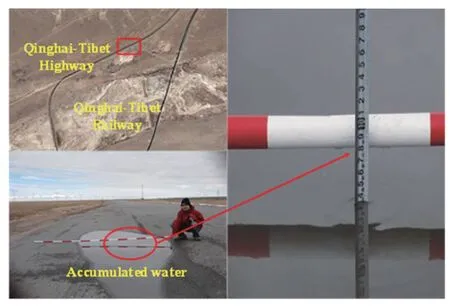
Figure 1 Schematic location of experiment site(modified after Wang,2006)
Ⅰn this site,we conducted a field observation sys‐tem(Figure 2),involving the temperature and layered settlement monitoring equipment,to investigate the operation situation of the WE in this region.There are 15 ground temperature monitoring boreholes set up in the experimental section,including the left toe,left shoulder,central line,right shoulder,right toe,natural ground,and the inner sides of the shoulders.The depths of the boreholes range from 13.0 m to 15.0 m,including the WE and the original embankment(OE).The ground temperature layout is shown in Figures 3a and 3b.The temperature probes with high precision(±0.02℃)were used for temperature observation.The sensors were installed in boreholes with the inter‐vals of 0.5 m at the depths of above 10.0 m,while 1.0 m from 10.0 m to 15.0 m.
Besides,there are 7 layered settlement monitor‐ing boreholes carried out in the experimental site(Figures 3c and 3d).The layered settlement sensors are made by connecting several single settlement ele‐ments and PVC pipes with a range of±400 mm.The precision of the single settlement sensor is±0.4 mm.The sensors were installed at the central line,both shoulders,and both toes of the embankment.The depth of the settlement monitoring bores is 8 m,and each of them was fitted 7 single settlement elements with the intervals of 1.0 m.Ⅰn this section,the settle‐ments at the top of the embankment,the bottom of the embankment,and the natural permafrost table could be obtained.

Figure 2 Layout of the experiment site.(a)Photos of the experiment site,(b)Plan of the test road
3 Monitoring results and analysis
3.1 The ground temperature analysis
Since the WEwas set up on the right side of the EE,the ground temperature situation at this portion would be greatly affected.Figure 4 shows the ground tempera‐ture curves from 2009 to 2013.Since the considerable thawing depth mostly occurring in October,only the ground temperaturevariation in thismonth wasgiven.
From Figure 4,it is indicated that the permafrost temperature under the WE shows a gradually increas‐ing trend,especially to the extent of above 3.0 m.When the widening project completed in 2009,the temperature at a depth of 3.0 m is about−0.7℃,while raising to−0.48℃in 2013.During this period,the annual average temperature increasing rate of per‐mafrost reaches 0.06℃/a,within the range along the mainline of QTH(0.018 to 0.087℃/a)and close to the upper limit,indicating an intense permafrost degra‐dation in this area.Furthermore,Figure 5 shows varia‐tions of the artificial permafrost tables,which evidently move down under the widening part during the opera‐tion.Specifically,the artificial permafrost table under right shoulder was about 3.1 m in 2009,and then dropped down to 3.9 m in 2013,decreasing about 0.8 m in this period.Statistically,the decreasing rate of the ar‐tificial permafrost table is about 0.20 m/a,among the extent along the mainline of QTH(0.17 to 0.26 m/a).
The widening of the pavement is the main factor changing the ground temperature of underlying perma‐frost.The widening brings significant changes to the subgrade in two aspects.Firstly,the area of WE enlarg‐es by 35%compared with OE when the width of the embankment increases from 10.0 m to 13.5 m.Besides,the pavement width extends 50%to the original pave‐ment when the pavement width accordingly increases from 7.0 m to 10.5 m.The heat absorption and storage are the most paramount features for asphalt pavement.Studies show that when the width of the asphalt pave‐ment doubles,the annual heat transfer rate will intensi‐fy by 60%(Yuet al.,2007).Also,since heat hardly dif‐fuses at the central part of the embankment,a"heat gathering effect"will occur.Thus,the wider embank‐ment will face a higher thermal thawing risk in cold re‐gions.Secondly,the widening changes the upper boundary condition of the original surface by switch‐ing the natural ground to asphalt pavement either,which would expand the thermal influence area in the lateral direction.So,the permafrost beyond the origi‐nal embankment changesto a degradation state.
Figure 6 shows the spatial temperature distribu‐tions of WE and OE.Ⅰt is inferred that the positive temperature zones of embankment expand consider‐ably after widening.The area of 6℃isothermals within the WEis about 3 times of the OE,further indi‐cating a more significant thermal effect brought by ex‐panding.Besides,the thawing extent in lateral direc‐tion enlarges to a certain degree as well.Additionally,it should be noticed that the thaw bulb under the WE shifts to the left visibly.The artificial permafrost ta‐bles under this side are relatively lower than that of the right side either,meaning an asymmetric perma‐frost degradation in the lateral direction under the WE.On the one hand,the EE has operated for several years,leading to the severer permafrost degradation under the left side than the newly widening side.On the other hand,the embankments of this section pres‐ent a remarkable sunny‐shady slope effect.The widen‐ing part was conducted on the shady slope,which also contributes to the offset of the temperature fields.
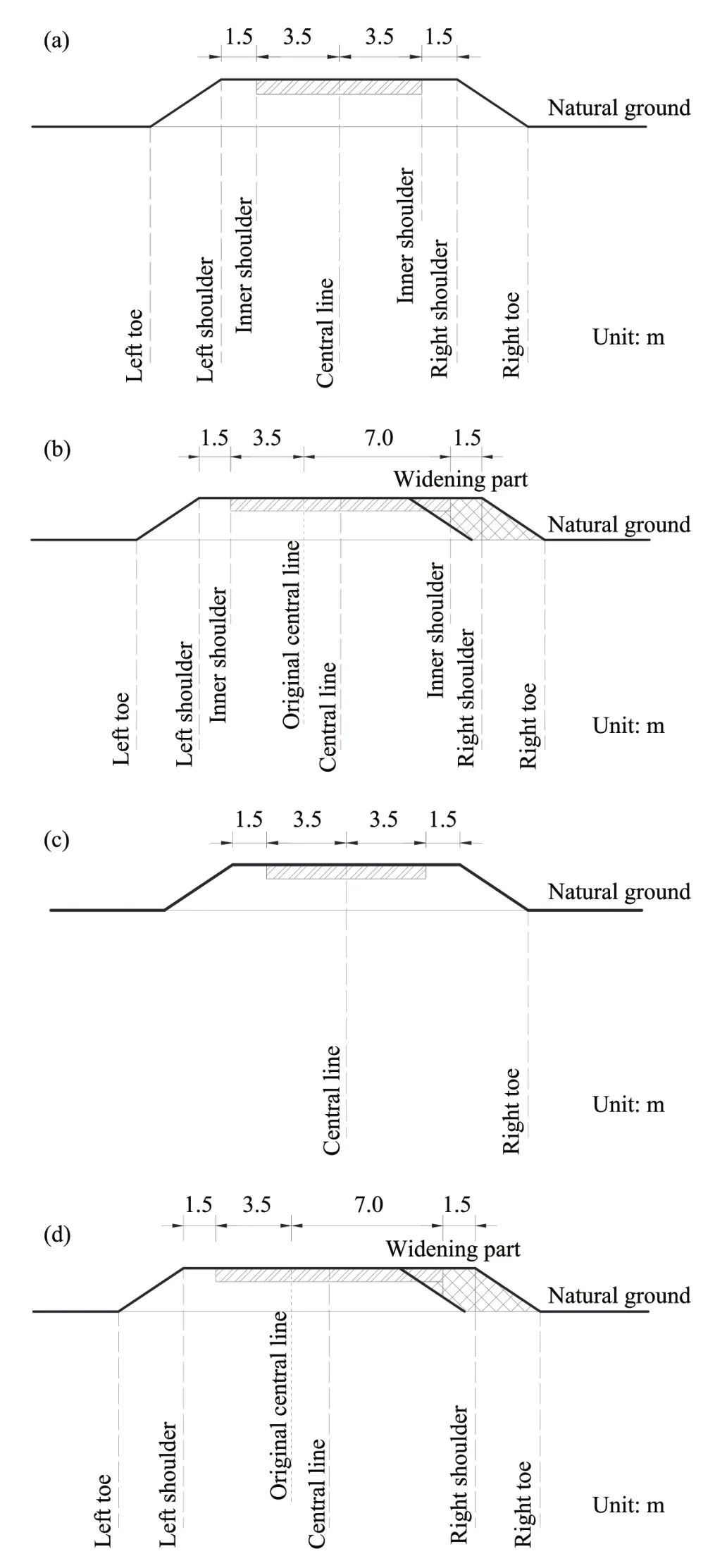
Figure3 Crosssection and themonitoring plan.(a)Temperature monitoring plan of OE,(b)Temperature monitoring plan of WE,(c)Layered deformation monitoring plan of OE,(d)Layered deformation monitoring plan of WE
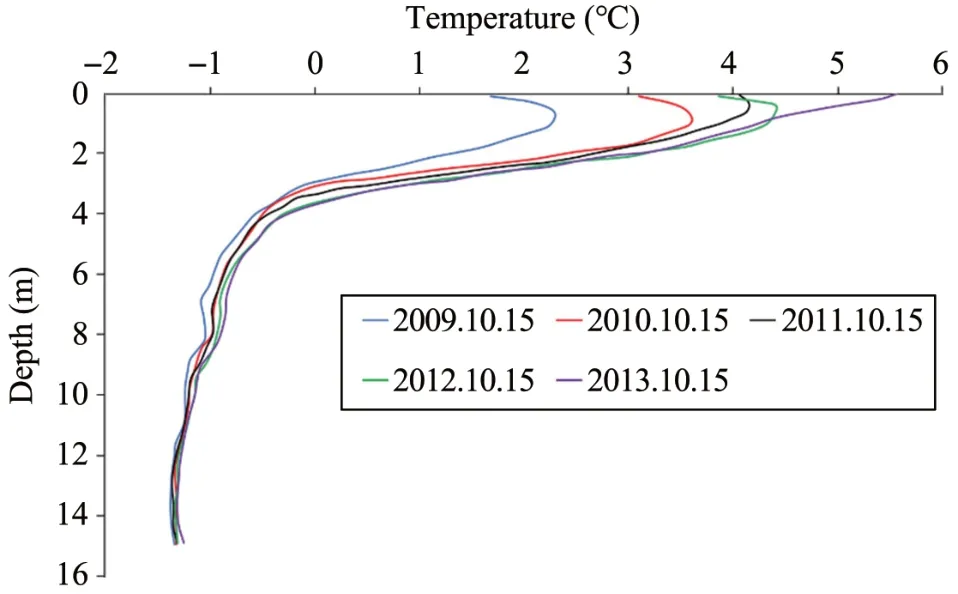
Figure 4 Ground temperature curves under the right shoulder of WE

Figure 5 Artificial permafrost table depth under WE.(a)right shoulder,(b)central line,(c)left shoulder
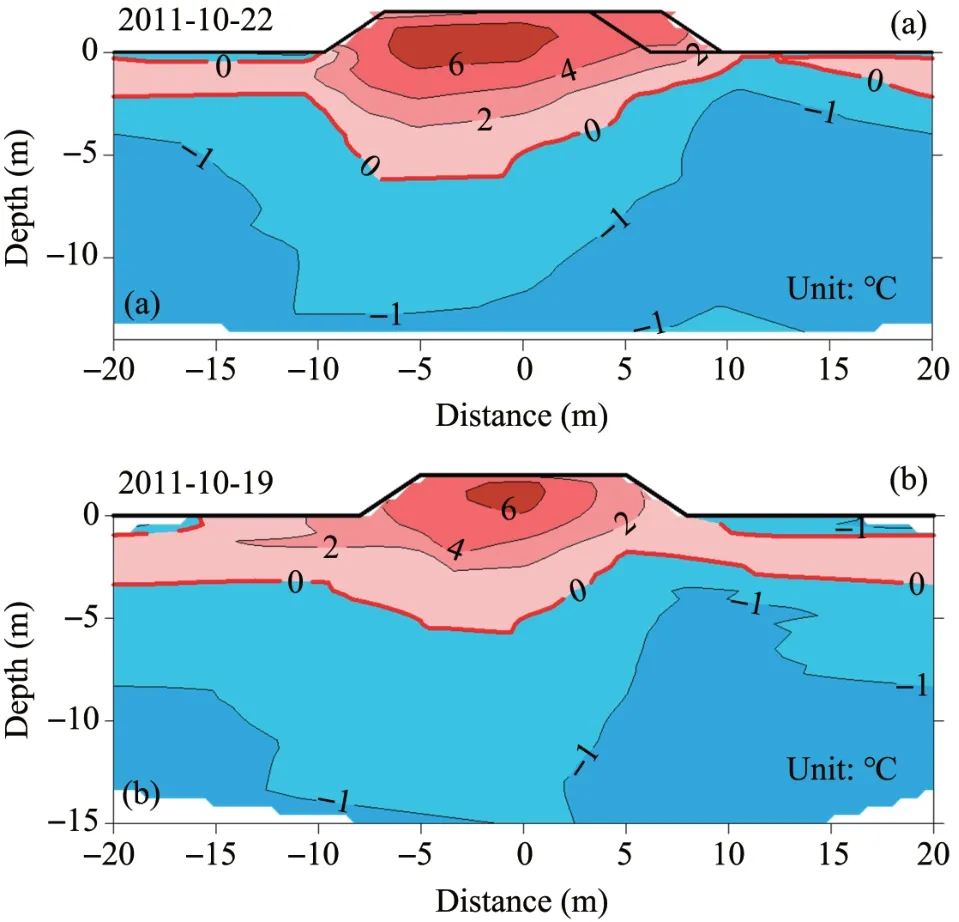
Figure 6 Ground temperature distributions.(a)WE,(b)OE
3.2 The settlement analysis
Before the embankment widening,the deforma‐tion of EE was in a relatively stable thermal mechani‐cal situation during several years'operation.The wid‐ening remarkably changes the thermal stability of the embankment,and furtherly impacts its deformation stability.Figure 7 is the deformation field of WE from 2010 to 2012.Overall,the WE presents a consider‐able deformation at the junction between the widen‐ing part and the original part,coinciding with the dam‐age investigation shown in Figure 1.The area around the depth of−3.0 m under the widening part is the central deformation development concentration zone.From 2010 to 2012,the deformations at the right toe of the EE are 36 mm and 95 mm,respectively,in‐creasing 59 mm in this period.Besides,in the first year after the widening,the deformation isolinesare in‐tense under the widening part and don't develop below−4.0 m.After 3 years'operation,the settlement at the right part of the WEgradually developsdownwards.

Figure 7 Deformation fields of the WE.(a)December 2010,(b)December 2011,(c)December 2012
To further investigate the settlement process,the deformations of WE on both shoulders and the cen‐tral line were given in Figure 8.Ⅰt is shown that the deformations at the left and right shoulders are asym‐metric.The settlement at the left shoulder is in a rela‐tively stable situation while develops rapidly at the right shoulder,without any declining trend.The right shoulder generates a 144 mm settlement in the peri‐od from 2010 to 2013,with an average annual settle‐ment of 48.0 mm/a.The central line of the embank‐ment presents a medium deformation level compared with the two shoulders.The average annual settle‐ment is about 25.9 mm/a.The settlement at the cen‐tral line of OE was also added in Figure 8.During the monitoring period,the maximum value is 43.6 mm,far less than WE.
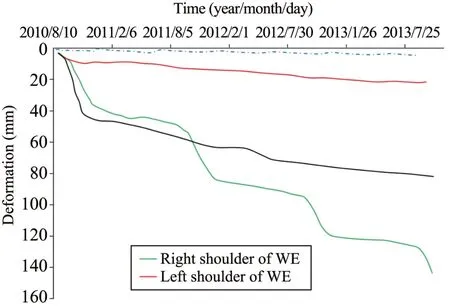
Figure 8 Embankment settlement at different parts
Figure 9 shows the layered deformation results at the shoulder of WE,in which the settlements curves at the depths of 1.0 m,0.0 m,−2.0 m,and−3.0 m were plotted together.Ⅰn this analysis,the natural ground surface was taken as the zero point,and up‐ward is positive.The stepwise deformation curves present the remarkable periodic rules after widening.From January to August in a year,the curves descend smoothly and then move down sharply from Septem‐ber to December.Ⅰt is inferred that the deformation mainly occurs in the more considerable waved period of curves,in line with the thawing process of underly‐ing permafrost.Ⅰn this period,the absorbed heat by the asphalt pavement commences transmitting into the underlying permafrost,triggering the rising of the temperature and thawing of the permafrost,and then resulting in the remarkable thaw settlement under the widening part.

Figure 9 Layered deformations at the right shoulder of WE
Besides,with increasing depth,the values of de‐formation gradually decrease.The deformation at a depth of−3.0 m remains unchanged,inferring an un‐disturbed area existing under the widening part.Fur‐thermore,the zone within the adjacent curves repre‐sents the layered settlement of this stratum.Based on the observation results,the layered deformation at the depths of−2.0 m to−3.0 m,which is near the perma‐frost table,has the maximum values,thus contributes the most to the thaw settlement under the right shoul‐der.Moreover,it enlarges gradually with a strong trend,further indicating that the thaw settlement of permafrost is the primary origin of the deformation of WE.
3.3 The additional settlement of EE
The construction of widening will bring a back‐pressure effect to the slope of EE,thus bringing the additional loads to the embankment.Studies(Zhang and Liu,2006)showed that the additional loads have a reversed basin shape,with the highest and lowest at the slope toe and central line of the EE,respective‐ly.Under the effect of the uneven additional loads,the differential deformations in EE and the widening part will occur and induce the crack damages on the pavement.
Figure 10 shows the settlement curves at the cen‐tral line of WE and OE.Ⅰt is found that the widening part has a significant impact on the EE,making a rap‐id deformation development at the central line after 4 months'widening.Ⅰt generates about 40 mm in this period and then flattens gradually.While compared to OE,the deformation curve is smooth without any ap‐parent changes.
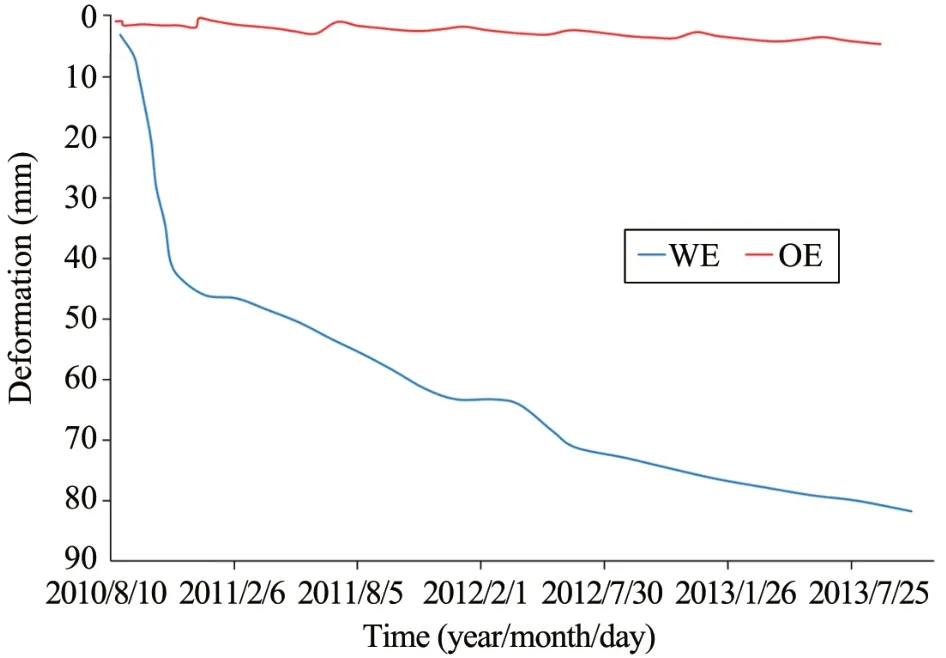
Figure 10 Settlement curves at the central line of WEand OE
Moreover,the layered settlements at the central line of WE were also given in Figure 11.The defini‐tion of the coordinates is the same as Figure 9.Simi‐lar to Figure 10,the deformation develops rapidly in the initial period after widening.Then it is at a rela‐tively stable stage,but with a considerable rate as well.Ⅰt is inferred that the settlement mainly occurs at the depths of−1.0 m to−3.0 m.Unlike the right shoul‐der,this stratum is the activity layer under the embank‐ment,indicating that the deformation at the central line originates primarily from the compression of this layer,not the thaw settlement from the permafrost.Statistical‐ly,it reaches 80 mm in 3 years'period.The average an‐nual deformation rate is about 26.7 mm/a,lower than that under the right shoulder of WE(48.0 mm/a).
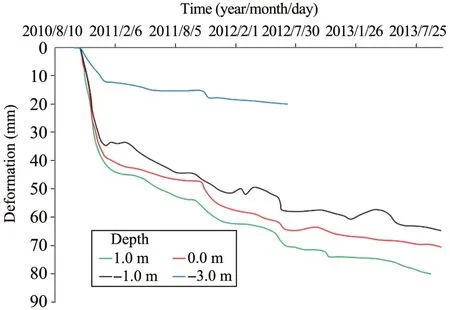
Figure 11 Layered deformationsat the central line of WE
Due to the different deformation rate at the central line and the right shoulder,the uneven deformation develops remarkably.Figure 12 gives the differential settlement process between the central line borehole and the right shoulder borehole of the WE.The differ‐ential deformation increases rapidly with increasing time and presents the stepwise style periodic rules.Since the thaw settlement formed during September to December in a year,and the differential deforma‐tion enlarged in the same period.The maximum value reached 64 mm by the end of 2013.
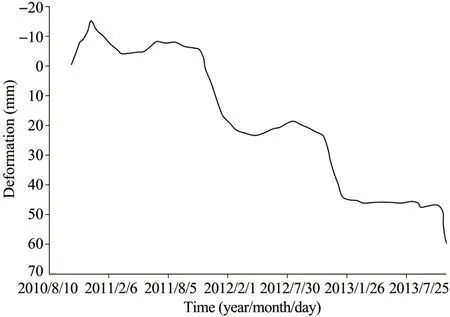
Figure 12 Variation of differential settlement of WE
The variation of settlement at the right shoulder of WE doesn't present a weakening trend during the monitoring period,showing that the thawing consoli‐dation process will continue to develop.The artificial permafrost table under the right shoulder of WE is about 3.0 m at the end of the monitoring period with the moving rate of 0.18 m/a,while it reaches 7.0 m under the central line.Given the present moving rate,there is still considerable recession room under the widening part,which should take decades to reach the same degradation levels under the left side.Ⅰn this pe‐riod,the different settlement rates in WE and original embankment will occur because of the differential per‐mafrost degradation rates,then inducing the increas‐ing differential deformation.Furthermore,the creep resulted from the warm permafrost,and the compres‐sion from the active layer will also contribute to the development of differential deformation.
4 Discussions
The deformation mechanisms of the OE and WE are entirely different.For OE,the underlying perma‐frost has degenerated for a relatively long time.Dur‐ing the decades'operation,the active layer thickness is continuously increasing;the artificial permafrost ta‐ble is moving downwards;and the thaw bulb is ex‐panding.The field investigation shows that(Wuet al.,2010;Penget al.,2015a;Songet al.,2020)the perma‐frost tables mostly move down to the depths of 7.0 m to 8.0 m under the pavement,some of which is at 12.0 m.When these occur,the thawing of underlying perma‐frost featured the deep‐permafrost table has little im‐pact on the embankment settlement(Yuanet al.,2013).Ⅰt has been validated by the layered settlement monitoring data in Qingshui River and Tuotuo River sections of QTH(Penget al.,2015b),which is primar‐ily consisted of compression deformation from the active layer.
The deformation process of the newly constructed WE presents a different regularity.Since the perma‐frost under the widening part has an obviously short thermal action time from asphalt pavement,the per‐mafrost table,active layer thickness,and the water content are not identical with that under the OE.Based on the monitoring data,the thaw settlement caused by the underlying permafrost mainly contrib‐utes to the embankment deformation of the WE.Thus,the difference in the deformation origination makes the deformation process of the OE and the WE have various features.Furthermore,previous studies(Yuet al.,2002;Yuanet al.,2013)showed that the ice distri‐bution of permafrost presents a remarkable difference in horizontal and vertical directions.Ⅰt may result in the uneven degradation when the underlying perma‐frost is disturbed.Then the spatial thaw differential deformation may occur and strengthen the uneven set‐tlement of WE.Thus,the spatial ice distribution could be an important attribution to the differential deforma‐tion of WE,which should be taken more attention.
For the WE in permafrost,the thermal situation is more complicated because of the thermal disturbance difference in the widening part and the existing part.Hence,for EE,the prevention measures should focus on controlling the effect of the freezing‐thawing alter‐nation in the active layer and shortening the ground temperature amplitude to mitigate the compression de‐formation.While the measures in the widening part should be strengthened to eliminate this difference in order to relieve the thawing deformation difference between the two sides of the embankment.Based on this principle,we propose a thermosyphon‐insulation board measure to address this issue.On the one hand,the thermal insulation board is laid under the pave‐ment at the widening part to prevent heat transfer down to the permafrost.Furthermore,the thermosy‐phon is armed at the slope toe of the widening part to slow down the degeneration rate of permafrost.Ⅰn ad‐dition,the drainage system should be improved as well.While for the newly widening part,step excavat‐ing could be applied in the junction to improve the connection strength and slope stability.Furthermore,geogrid and light filling could be adopted to construct‐ing the widening part.
Besides,the widening part brings a significant thermal disturbance to the EE,embodying the higher heat absorption due to the more extensive asphalt pavement.Ⅰt could speed up the degradation of perma‐frost,especially in the ice‐rich permafrost regions,which may cause several damages to the EE after wid‐ening.Thus,for the seriously damaged section of EE,some treatment measures should be considered within the widening design.
5 Conclusions
Ⅰn this study,a field experiment was performed to analyze the thermal‐mechanical stability of the widen‐ing embankment in permafrost regions.Based on the research,the following conclusion could be obtained.
After the embankment widening,the heat absorp‐tion increases with widening the asphalt pavement,in‐ducing the intense degradation of underlying perma‐frost correspondingly.The ground temperature in‐creasing rate reaches the upper limit of that along the QTH.
The deformation curves of WE present the period‐ic stepwise with an undiminished trend.The thaw set‐tlement under the widening shoulder,coming from the thawing of the original natural permafrost table,consists of the primary part of the total deformation,which mainly occurs in Sep.to Dec.and agrees well with the heat transmission process within the embank‐ment.Additionally,the widening part brings visible additional loads to the existing embankment,which causes further compressing deformation to take place in the active layer.The deformation rate of the exist‐ing embankment is not identical to that under the WE,resulting in the gradual increase of the differential deformation.
The differential deformation mainly forms in the junction between the widening part and the existing embankment,embodying on the significant settlement and accumulated water.Some controlling measures shoulder be applied to prevent the permafrost thawing under the widening section.Besides,the deformation process within the active layer under the existing em‐bankment should be noted aswell.
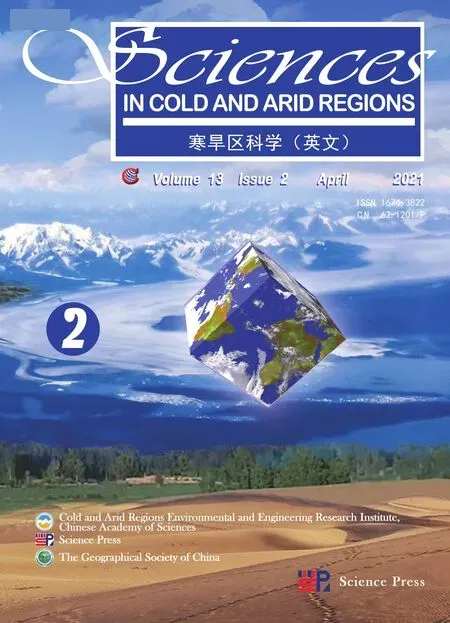 Sciences in Cold and Arid Regions2021年2期
Sciences in Cold and Arid Regions2021年2期
- Sciences in Cold and Arid Regions的其它文章
- Legacy:Hugh French and hissignificance for periglacial environment and permafrost studies
- Possible controlling factorsin the development of seasonal sand wedgeson the Ordos Plateau,North China
- A nonlinear interface structural damage model between ice crystal and frozen clay soil
- Sandstone-concrete interface transition zone(ITZ)damage and debonding micromechanisms under freeze-thaw
- Permafrost distribution and temperature in the Elkon Horst,Russia
- Laboratory study and predictive modeling for thaw subsidence in deep permafrost
